Maine Coon
The Maine Coon has become one of the most popular cat breeds in the world. This is probably due to its majestic appearance, robust nature and great character.
Are you looking for a cat that perfectly complements your family with its calm, well-balanced nature, and that will happily live indoors? Chances are the “British Shorthair” will have been recommended to you as the ideal breed! No cat-lover will be able to resist the plush coat and big eyes of the British Shorthair, and its character is equally lovable. But what else do you need to know about this breed? Our breed portrait will introduce you in detail to these lovable felines, as well as offering tips on purchasing and keeping your cat, alongside good nutrition and health care.
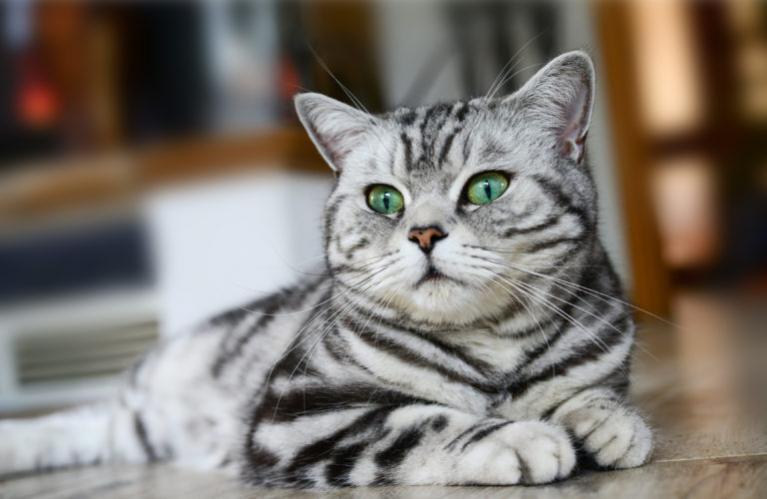
© Sterneleben / stock.adobe.com
The British Shorthair is a simple breed, with a friendly, quiet temperament that will fit well into almost every household, even those with children or other animals.
The short, dense and easy-to-care-for coat of the British Shorthair combines with its short round head, round ears, big yellow eyes and sturdy physique to offer the general look of a teddy bear. You will instantly want to give this cat a hug! No wonder the British Shorthair has become one of the most popular cat breeds.
British Shorthairs are stably built, growing slowly like with all larger cat breeds. As a rule, the British Shorthair will not be fully grown until it reaches the age of three! Females will then weigh up to 5kg, with males up to 7kg. British Shorthairs tend to enjoy good health and can live to at least 15 years if they are well looked after and properly fed.
Many cat lovers will know the British Shorthair cat breed as being classic blue-grey. They should not be confused with the Chartreux cat, although this breed can also offer the blue-grey colouring – the error does not come from nowhere, as the Chartreux and British Shorthair have been cross-bred several times during the breed’s history. The colouring of the British Shorthair leaves very little to be desired, as you can find this breed in practically every known colour!
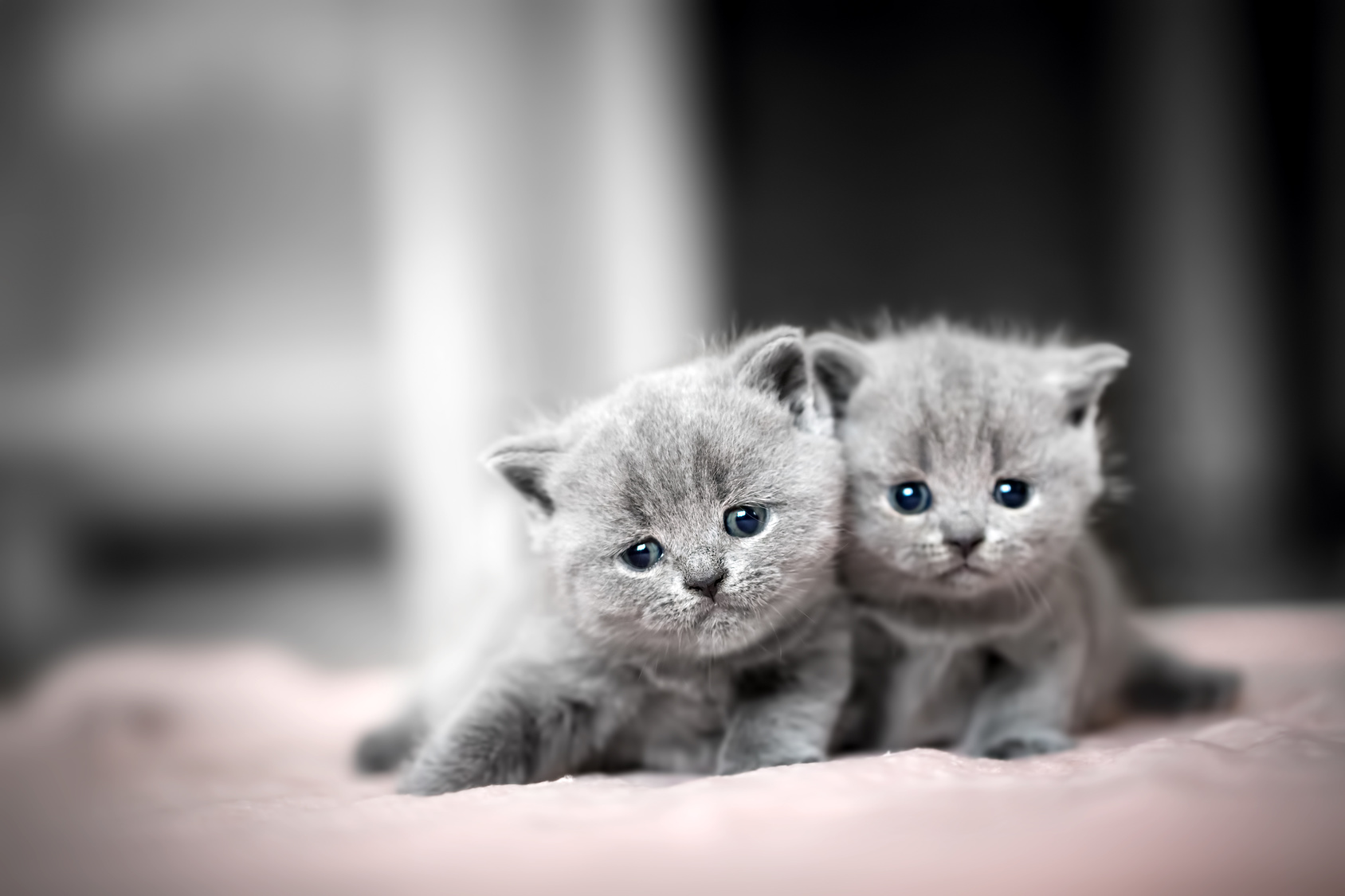 © Photocreo Bednarek / stock.adobe.com
© Photocreo Bednarek / stock.adobe.com
Whether it is a single colour or mixed colouring, every British Shorthair is a feast for the eyes! Monochrome cats are available in grey-blue and black, as well as colours such as “lilac” and “fawn” being especially popular. There are red cats as well as cream-coloured, black-and-white and tricolour cats. If you like the more unusual colours, the British Shorthair also comes in variations such as “chocolate smoke” and “blue tortoiseshell tabby”! How about a “silver shaded”? Any cat classed as “shaded” only shows the specific colour at the tip of the hair.
Tabby variants are particularly popular – everyone knows the Whiskas silver tabby cat! No matter if you are looking for a mackerel, blotched or spotted cat in cinnamon, harlequin or colourpoint, there are more than 300 variants to choose from so it leaves nothing to be desired1
Here is a brief summary of the main colour variants found in the British Shorthair breed:
In technical terms, your cat’s markings will often be combined with the prevailing coat colour. For example, the British Shorthair Silver Tabby is a silver-white base colouring with clear tabby markings.
The British Shorthair is a simple breed through and through, with a friendly, quiet character that makes it perfect for keeping with children and animals.
These cats are considered to be fairly balanced and people-friendly. They are not particularly acrobatic, with a much calmer nature than some breeds. This makes the British Shorthair an ideal housecat, although this will also depend on each individual cat, its personality, and how much entertainment it can find inside your home. If you are looking to keep your cat indoors at all times, you will need to provide plenty to do in terms of scratching, cat toys and hiding! Games to play with you as its owner are also essential. Cats are natural predators and will still try to hunt indoors, even if they have a laid-back nature, so it is vital that there is plenty to keep your cat engaged.
A space-saving way to expand your cat’s world when it lives indoors is the so-called “Third Dimensions”. The best example of this is a scratching post, which extends upwards as well as outwards. Cats love to climb and to watch the world from above, so this can be a great solution. If you are not a fan of traditional floor-to-ceiling cat trees, there are plenty of toys and bedding options that can be placed on shelves to transform another level into a climbing paradise!
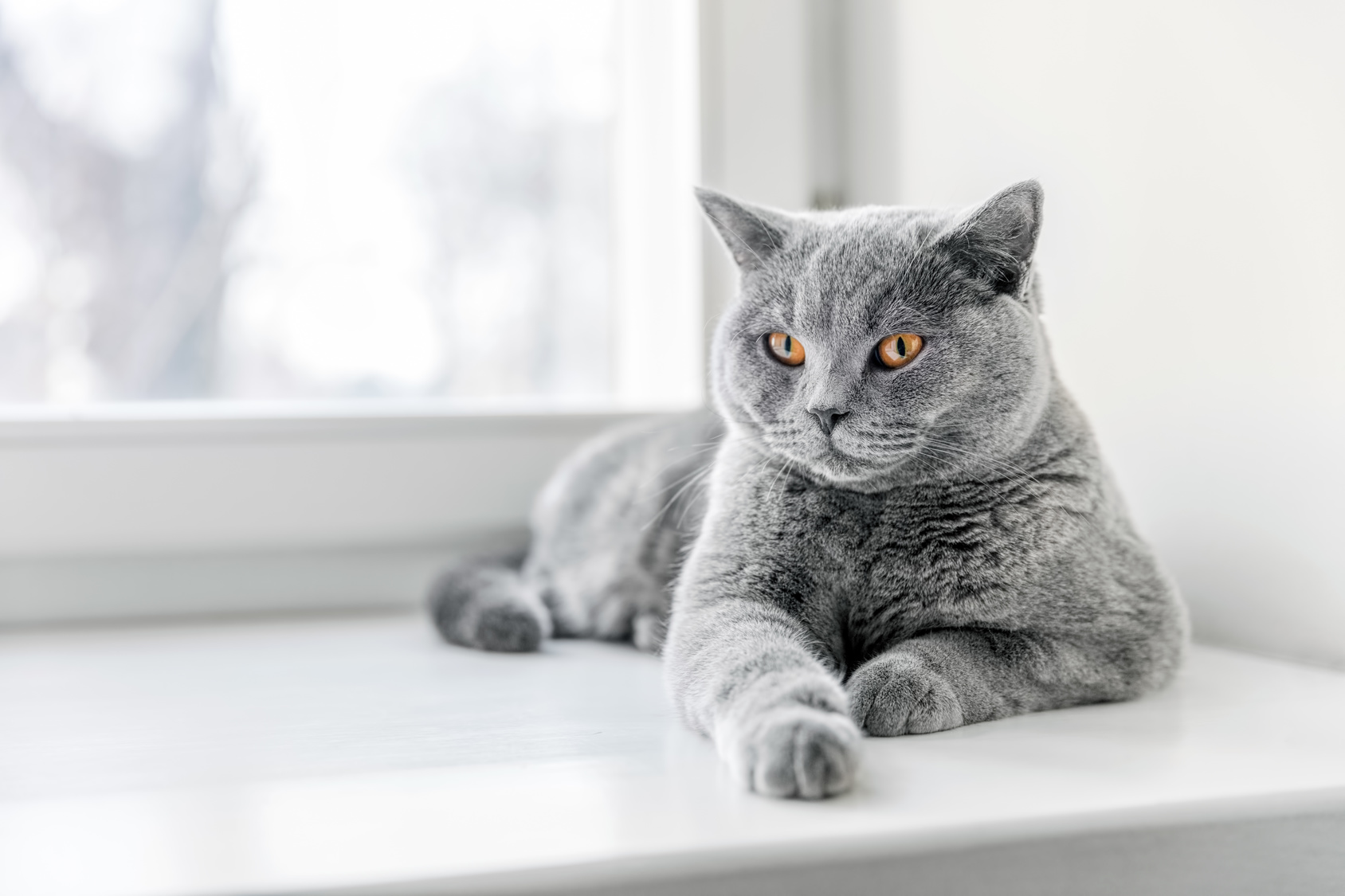 © Photocreo Bednarek / stock.adobe.com
© Photocreo Bednarek / stock.adobe.com
A high-quality cat food with plenty of fresh meat, healthy protein and a few added vegetable or plant ingredients is the perfect food source for cats such as the British Shorthair. You can also find breed-specific food that will be specially tailored to the individual needs of each breed. British Shorthair cat breed specialised food has a special kibble size and shape that makes it easier for cats with short jaws to take on nutrients, encouraging chewing. However, even if you opt for one of these special feeding regimes, you will still need to have regular check-ups at the vet.
To help prevent joint diseases and hypertrophic cardiomyopathy, breed-specific foods will often also be supplemented with an extra dose of taurine and cartilage nutrients such as glucosamine. Nutrients such as vitamin B and ingredients such as salmon oil can be added to keep your cat’s coat healthy and glossy.
Of course, you can also add specific supplements to your cat’s diet, especially if you have chosen raw feeding or homemade meals. Taurine is responsible for supporting your cat’s neurological health and regulating the heart rate. Your cat cannot overdose on taurine, as any excessive will simply be excreted, but a deficiency can lead to blindness, a compromised immune system and stiffening in the heart muscles. The recommended dose of taurine for an average cat is 100-200mg per day. Many cat lovers choose to supplement their cat’s pre-made diet with taurine themselves, as well as adding high-quality oils such as salmon to keep your cat looking beautiful. The same applies to supplementing your cat’s diet for joint support, as glucosamine can be mixed into food as either a powder or a liquid.
Aside from a species-appropriate diet, the British Shorthair requires very little special care. A regular check up with your veterinarian, weekly grooming with a brush or comb, species-appropriate food, weight control and lots of attention, love and games are the best ways to ensure your cat lives a healthy, happy lifestyle!
Find out more about British Shorthair nutrition!
The powerful physique of the British Shorthair can often place strain on the bones and joints. No cat in general is safe from disease, but the artificially-reduced gene pool of pedigree cats can often mean that certain problems are more likely to occur.
As well as having a predisposition to joint diseases, heart diseases such as hypertrophic cardiomyopathy (HCM) and haemophilia B, a blood disorder, are also more common in British Shorthair cats. Polycystic Kidney Disease (PKD) can also be a problem, with hereditary renal cysts occurring in British Shorthairs as well as in Persians and Exotic Shorthairs. Hereditary renal cysts are dominantly inherited and the symptoms often only show up later in life, which can mean breeding animals have already passed the gene onto their offspring – if a cat has hereditary renal cysts, its offspring are guaranteed to have them as well. A simple ultrasound at around the ten week point can show if your cat has a predisposition to PKD, which is why breeding cats should be regularly examined by veterinarians to exclude such hereditary diseases and prevent them being passed on to any kittens. Before buying a young cat from a breeder, you should insist on seeing prove of such examinations having been carried out on the parents.
Find out our kidney and renal vet cat food on zooplus!
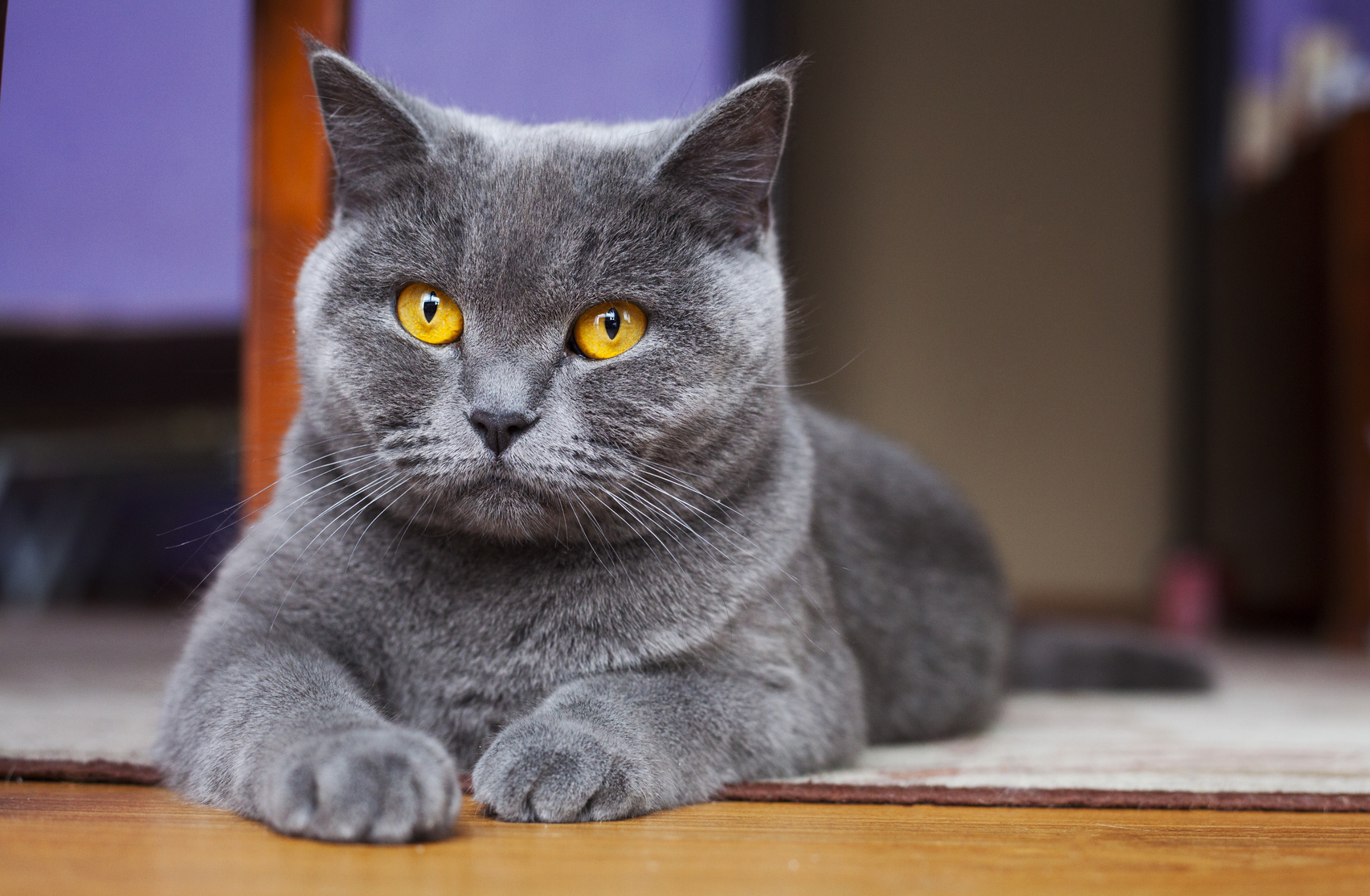 © Maksym Povozniuk / stock.adobe.com
© Maksym Povozniuk / stock.adobe.com
The British Shorthair is considered to be the oldest British cat breed. They were allegedly brought to Britain by the Romans, where they lived in isolation for a long time. Although the origins of these teddy bears lie in the streets of England, these cats rarely hunt mice. They have been selectively bred for over 100 years, with the first cats of this breed being exhibited at the Crystal Palace in 1871.
Cross-breeding of the British Shorthair mainly took place after the two World Wars, with Persians and Chartreux cats being included in the gene pool to help improve the dwindling population of the breed. As a result, the Chartreux and the British Shorthair were becoming increasingly similar. The two breeds were even grouped in 1970 by the FIFe breeding federation, with all blue cats being Chartreux and all others being British Shorthair. This classification was withdrawn again in 1977. Targeted breeding has led to a difference in appearance between the two breeds, even if they are often confused with one another. The crossing with Persian cats led to the short and stocky physique of the British Shorthair cat breed, with the Chartreux keeping a slim figure that is more similar to the average domestic cat.
By breeding the British Longhair or “Highlander” with Persian cats also led to a half-longhair variant of the British Shorthair. The long-haired cats are bred according to the same breeding standards as the British Shorthair, differing only in coat length. Just like the British Shorthair, the Longhair has a balanced nature and a friendly, adaptable character.
Since being recognised as a breed in 1980, the British Shorthair cat has frequently been the star of international cat shows.
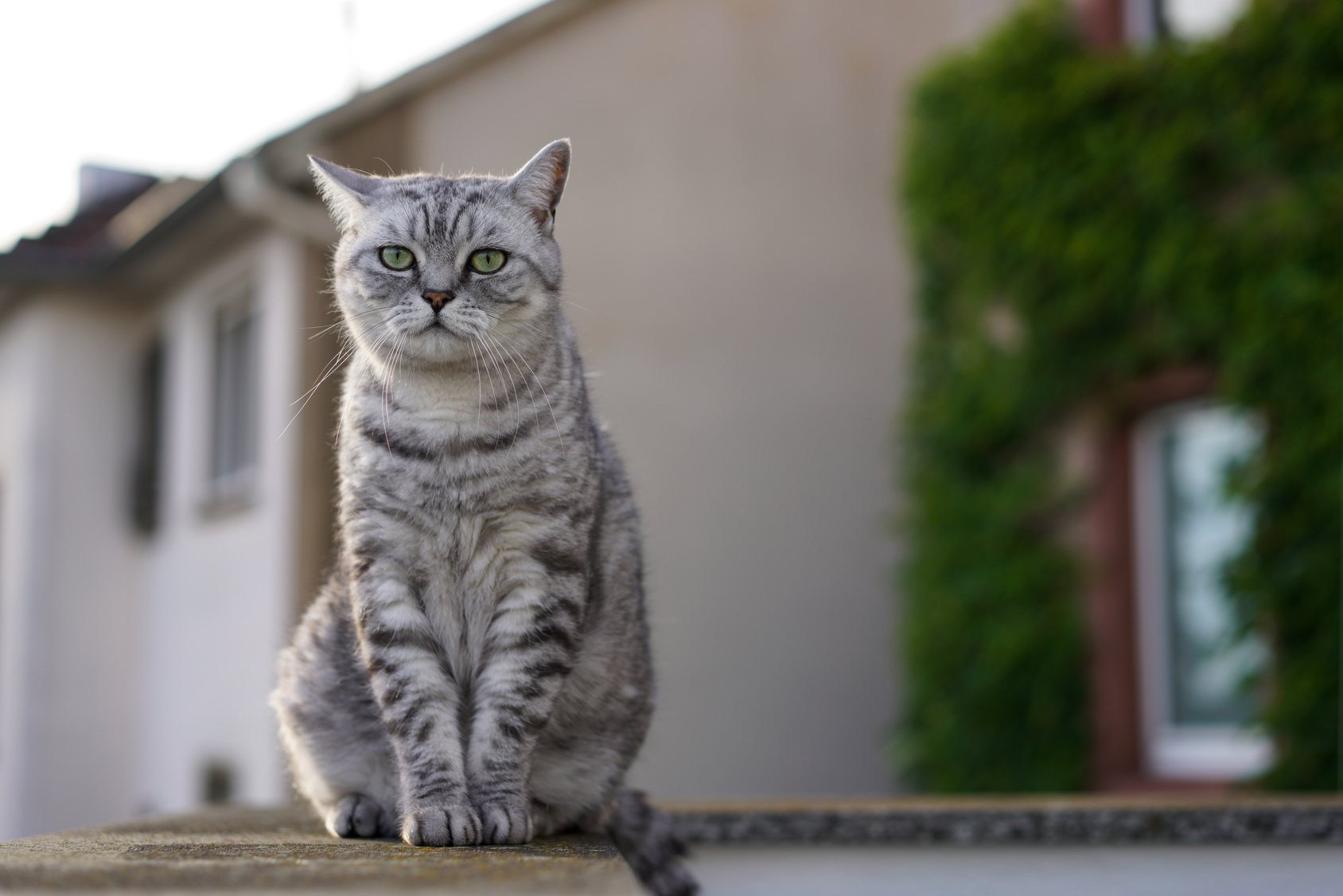 © Pierre / stock.adobe.com
© Pierre / stock.adobe.com
Breeding cats should be examined regularly by veterinarians to rule out any hereditary diseases and their potential inheritance. Anyone buying a British Shorthair needs to trust that they have found a truly professional breeder – in many cases, the price you are expected to pay for your pedigree kitten will tell you whether or not the breeder is legitimate. The cost for one of the cats will be high, but will be well worth it to receive a well-bred pedigree British Shorthair. It ensures the breeder will be regularly checking the parents’ health, investing in good food, breeding intelligent pairs and not letting queens have too many litters. A reputable breeder will also ensure each kitten has the time it needs with its mother and siblings before being sent to its new home – this can be twelve or even sixteen weeks. During this time, young cats learn everything they need to know about living a balanced, healthy feline lifestyle and become ready to join their new human family! Naturally, all of this costs money.
You should not trust any breeder who offers “pedigree cats without papers”, or who offers kittens at too low a price – you will get what you pay for. Breeders belonging to breed associations will ensure their animals are healthy and regularly tested, rather than simply breeding any cats without thought to make as much money as fast as possible. Careless breeding can often result in hereditary diseases being passed along, or with kittens who are separated from their mother far too early and without proper vaccinations.
You can find professional breeders through breeding clubs, as well as in other places. It never hurts to take a closer look at the breed! Avoid making any “pity purchases”, as buying a “pedigree kitten without papers” for a bargain price simply boosts the demand for these poor creatures – unfortunately, the supply and demand principal even applies to the lives of young cats.
Unfortunately, being a pedigree does not mean a cat will not suffer its share of trials and tribulations, and a British Shorthair is as likely to end up in a shelter as any other breed. If you want to give a cat a home and are happy to take on an adult rather than a kitten, then local animal shelters can be a great choice. An adult cat will already have a fully established character and any animal in a shelter is looking for a good new home with a loving family!
We wish you plenty of fun with your British Shorthair cat!
| Size | Medium to large |
| Weight (Females) | Up to 5 kg |
| Weight (Males) | Up to 7 kg |
| Coat | Dense, plush, and short |
| Coat Color | Blue, black, lilac, fawn, red, cream; Colourpoint, Chinchilla, Tabby, Tortie, Bi-color, Arlequin varieties |
| Eye Color | Gold, copper, green, or blue |
| Price | €400-€1,000 |
| Temperament | Calm, affectionate, enjoys attention |
| History | One of the oldest British cat breeds |
| Health Concerns | Prone to joint problems, heart disease, hemophilia B, and Polycystic Kidney Disease (PKD) |
| Lifespan | 15 years |
| Gestation | Around 65 days |
| Litter Size | 4-5 kittens |
| Good with Children | Can be good with children |
| Good with other Pets | Can be good with other pets |
| Apartment Living | Yes |
Here are some purchase proposals curated by the zooplus editorial team
The products featured have been carefully selected by our editorial staff and are available at the zooplus online pet shop. The selection does not constitute advertising for the mentioned brands.
The Maine Coon has become one of the most popular cat breeds in the world. This is probably due to its majestic appearance, robust nature and great character.
Large eyes and attentively upright ears instantly tell you a great deal about this charming breed of cat: Abyssinians are inquisitive and affectionate towards people.
With its long, dense fur, rounded ears, and intense stare, the Pallas Cat, or Manul, looks rather fluffy, yet somewhat dangerous. However, don't be fooled by its appearance—this is no petting zoo resident. The Manul is a wild animal and considered untameable.